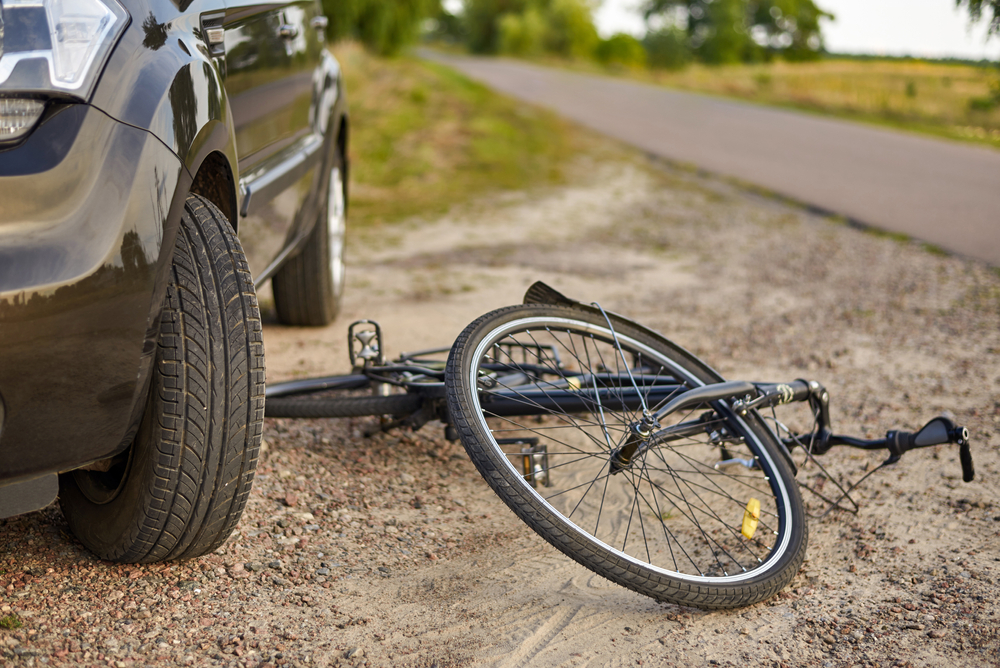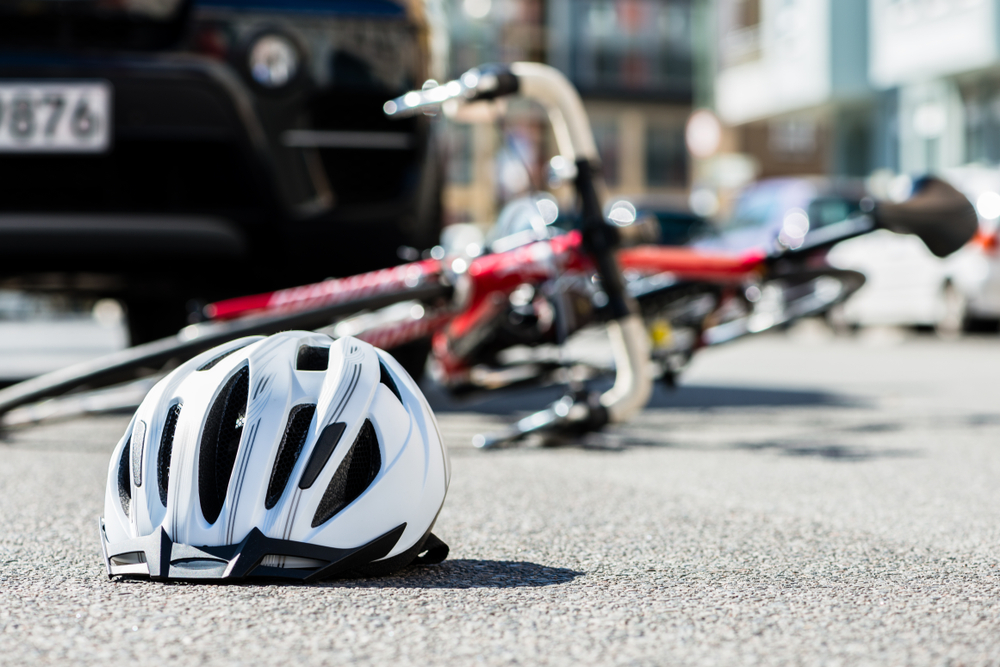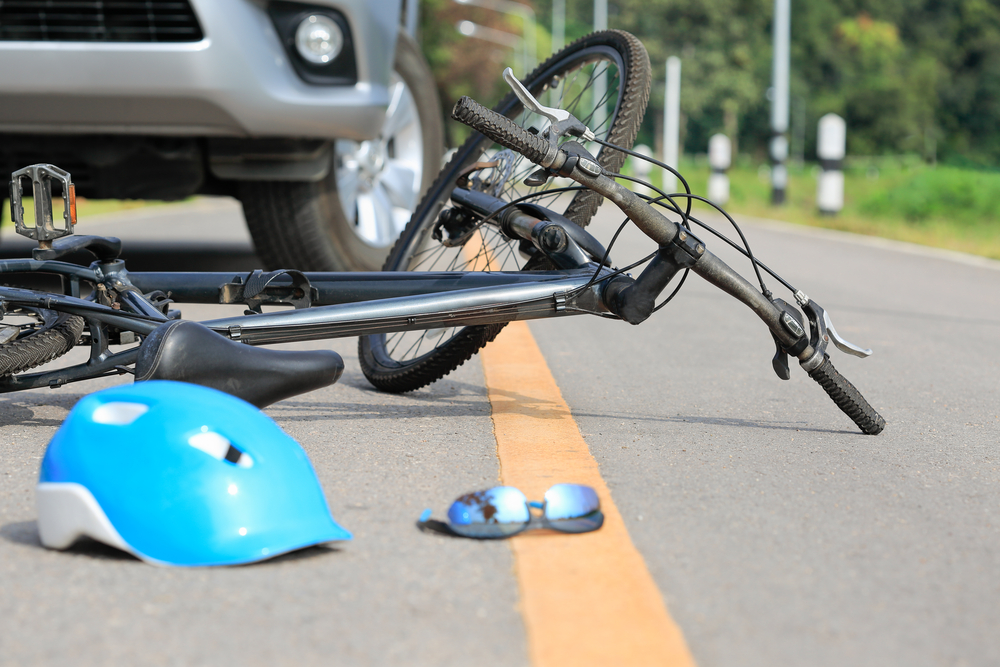
Yes, in Texas, you absolutely can sue a driver or another party for hitting you on a bike if their carelessness or negligence caused your injuries. A skilled bicycle accident lawyer can help you navigate this process and hold the at-fault party accountable.
Being struck by a vehicle while cycling can be a terrifying and life-altering experience, leaving you with serious injuries and unexpected financial burdens. To hold the responsible person accountable, you must prove that their actions led directly to the accident and your subsequent damages.
Key Takeaways about Suing Someone for Hitting You on a Bike
- A person injured in a bicycle accident in Texas may be able to file a lawsuit against a driver whose negligence caused the crash.
- Proving a bicycle accident claim requires establishing that the driver had a duty of care, breached that duty, and caused the cyclist’s injuries and damages.
- Texas law generally treats bicycles as vehicles, granting cyclists the same rights and responsibilities as motorists on the road.
- Compensation in a bicycle accident case can include two types of damages: economic damages for medical bills and lost wages and non-economic damages for pain and suffering.
- The state’s “modified comparative fault” rule can affect a settlement, potentially reducing compensation if the cyclist is found to be partially responsible for the accident.
- A personal injury attorney can handle the legal process, from investigation to negotiation, allowing the injured person to focus on healing.
Understanding Your Rights as a Cyclist in Texas

Many people are surprised to learn that under Texas law, bicycles are not just recreational toys; they are considered vehicles. The Texas Transportation Code § 551.101 grants a person operating a bicycle most of the same rights and duties as a driver operating a motor vehicle. This is a critical point in any bicycle accident case. It means that drivers of cars and trucks must treat you with the same respect and give you the same right-of-way they would give another car.
This legal standing provides cyclists with significant protections. For instance, drivers must provide a safe passing distance, yield to you in intersections when appropriate, and be mindful of bike lanes. However, it also means that cyclists have responsibilities.
- Obeying Traffic Laws: You are generally required to ride in the same direction as traffic, obey all traffic signals and signs, and use hand signals to indicate turns.
- Night Riding Equipment: If you are riding at night, you must have a white light on the front of your bike and a red reflector or red light on the back.
- Following Local Ordinances: Some cities, including communities within Tarrant County, have specific rules about where you can ride, such as whether cycling on sidewalks is permitted.
Understanding these rights and responsibilities is fundamental because the actions of both the cyclist and the driver will be closely examined after an accident to determine if a cyclist has a viable personal injury claim.
The Key to a Successful Claim: Proving Negligence
To successfully sue someone for hitting you on your bike, you must prove they were “negligent.” In legal terms, negligence isn’t just about being a bad person; it’s a specific concept with four distinct parts. Think of it as a four-legged stool—if one leg is missing, the whole thing falls apart.
- Duty: The driver had a legal duty to operate their vehicle safely and avoid causing harm to others on the road, including cyclists. This is a given for anyone with a driver’s license.
- Breach: The driver breached, or violated, that duty. They did something a reasonably careful person would not have done, like texting while driving or running a red light.
- Causation: The driver’s breach of duty directly caused the accident and your injuries. For example, because the driver was looking at their phone, they failed to see you in the crosswalk and hit you.
- Damages: You suffered actual harm as a result. This includes physical injuries, medical bills, damage to your bicycle, lost income, and emotional distress.
If you can establish all four of these elements, you have a strong foundation for a personal injury claim.
Common Examples of Driver Negligence in Bicycle Accidents

Driver carelessness can manifest in many ways on the roads of Arlington and Fort Worth. Some of the most common actions that lead to devastating bicycle accidents include:
- Distracted Driving: This is a leading cause of all traffic accidents. It includes texting, talking on the phone, adjusting the radio, or any other activity that takes a driver’s attention off the road.
- Failing to Yield the Right-of-Way: Many crashes happen at intersections when drivers turn left in front of an oncoming cyclist or fail to stop at a stop sign.
- Unsafe Passing: Drivers who do not give cyclists enough space when passing can easily clip them or force them off the road. Texas law requires drivers to pass at a safe distance.
- “Dooring”: This occurs when a driver or passenger of a parked car opens their door into the path of an approaching cyclist without looking first.
- Speeding or Driving Aggressively: Exceeding the speed limit reduces a driver’s reaction time and significantly increases the severity of a cyclist’s injuries in a collision.
These are just a few examples of how a driver’s simple mistake or moment of inattention can have catastrophic consequences for a cyclist.
What About Texas’s “Modified Comparative Fault” Rule?
In a perfect world, one person would be 100% at fault. In reality, the situation is often more complex. The insurance company for the driver might argue that you, the cyclist, were also partially to blame. For example, they might claim you were not using proper hand signals or were hard to see at dusk.
This is where Texas’s proportionate responsibility rule, also known as modified comparative fault, comes into play. According to this rule, you can still recover damages as long as you are not found to be 51% or more at fault for the accident.
If you are found partially at fault, your final compensation award will be reduced by your percentage of fault. For example, if a jury determines your total damages are $100,000 but finds you were 20% at fault, your award would be reduced by 20%, leaving you with $80,000. This rule is a primary reason why insurance companies often try to shift blame onto the injured cyclist, making it crucial to have an advocate who can protect your rights.
What Kind of Compensation Can You Recover?
No amount of money can undo the trauma of an accident, but fair compensation can provide the financial stability you need to heal and move forward. The compensation you can seek in a Texas personal injury claim is referred to as “damages.” These damages are typically divided into two main categories.
Economic Damages: The Tangible Costs
These are the direct financial losses you have suffered because of the accident. They are straightforward and can be calculated by adding up bills and receipts.
- Medical Expenses: This includes everything from the initial ambulance ride and emergency room visit to ongoing physical therapy, future surgeries, medications, and medical devices.
- Lost Wages: If your injuries prevent you from working, you can be compensated for the income you have already lost.
- Loss of Earning Capacity: If your injuries are permanent and will affect your ability to earn a living in the future, you can seek damages for this long-term financial loss.
- Property Damage: This covers the cost to repair or replace your bicycle, helmet, phone, or any other personal property damaged in the crash.
These costs can add up quickly, especially with serious injuries that require extensive medical treatment and long recovery.
Non-Economic Damages: The Intangible Losses
These damages compensate you for the non-financial ways the accident has impacted your life. While they don’t have a clear price tag, they are just as real and devastating.
- Pain and Suffering: This accounts for the physical pain and discomfort you have endured and will continue to endure because of your injuries.
- Emotional Distress: This can include compensation for anxiety, depression, fear, and post-traumatic stress disorder (PTSD) stemming from the accident.
- Loss of Enjoyment of Life: If your injuries prevent you from participating in hobbies and activities you once loved, such as cycling through River Legacy Parks or playing with your children, you can be compensated for this loss.
- Disfigurement and Impairment: This addresses the impact of permanent scarring, amputation, or other physical disabilities.
Calculating these damages requires a deep understanding of how juries and insurance companies value these types of losses, and it is a critical part of ensuring you receive a fair settlement.
The Role of an Arlington Bicycle Accident Attorney

Trying to handle a personal injury claim while recovering from serious injuries can be overwhelming. An attorney focused on personal injury law can lift that burden from your shoulders and manage every aspect of your case. Their goal is to build the strongest possible claim on your behalf so you can focus on what matters most: your health.
A dedicated legal advocate can perform many crucial tasks, including:
- Conducting a Thorough Investigation: This involves gathering the police report, interviewing witnesses, collecting photos and videos of the scene, and sometimes hiring accident reconstruction professionals to prove how the crash occurred.
- Calculating the Full Value of Your Claim: They will work with you and your doctors to understand the full extent of your damages, including future medical needs and long-term financial impacts.
- Handling All Communications: They will serve as your representative, managing all phone calls, emails, and negotiations with insurance adjusters who are trained to settle claims for as little as possible.
- Negotiating a Fair Settlement: Most personal injury cases are resolved through a settlement. An attorney can leverage the evidence to negotiate for the maximum compensation you deserve.
- Taking Your Case to Court: If the insurance company refuses to make a fair offer, a trial attorney is prepared to file a lawsuit and fight for you in front of a judge and jury.
By managing the complex legal and administrative work, a lawyer allows you the space and peace of mind necessary for a full physical and emotional recovery.
FAQs: Suing Someone for Hitting You on a Bike
Here are some answers to common questions cyclists have after being involved in an accident in Texas.
If the at-fault driver has no insurance or not enough to cover your damages, you may be able to file a claim with your own auto insurance policy. This is done through your Uninsured/Underinsured Motorist (UM/UIM) coverage, which is designed to protect you in exactly this type of situation.
In Texas, the statute of limitations for most personal injury cases is two years from the date of the accident. This means you generally have two years to either settle your claim or file a lawsuit. If you miss this deadline, you will likely lose your right to seek compensation forever.
While a police report is not legally required to file a claim, it is extremely valuable. The report contains important information about the accident, including the driver’s contact and insurance details, witness statements, and the officer’s initial assessment of fault. It is one of the most important pieces of evidence in any case.
Let Us Handle the Fight While You Focus on Healing

After a bicycle accident, you shouldn’t have to face powerful insurance companies alone. At Branch & Dhillon, P.C., we are passionate about advocating for the rights of injured individuals in Arlington and throughout Tarrant County. Our personal injury attorneys focus solely on personal injury law, and we are dedicated to providing the compassionate and determined representation you need.
We handle every case on a contingency fee basis, so you will never pay us a penny out of pocket unless we win compensation for you. Let us take on the legal worries so you can concentrate on your recovery. Contact Branch & Dhillon, P.C. today at (817) 533-3430 or through our online form for a free, no-obligation consultation to discuss your case and learn how we can help.

